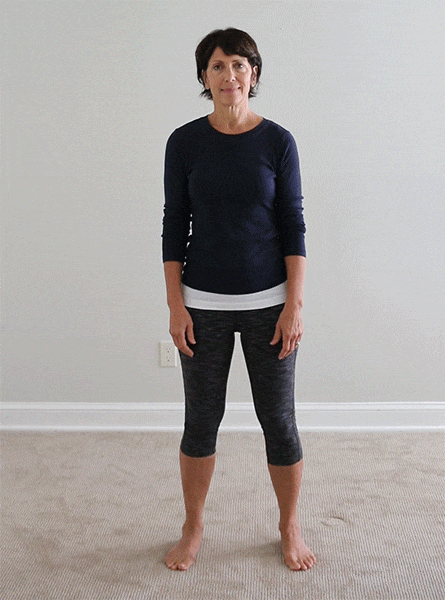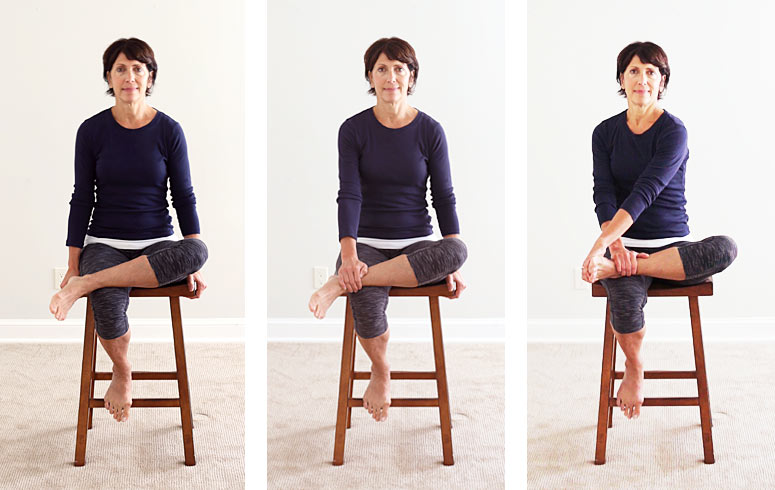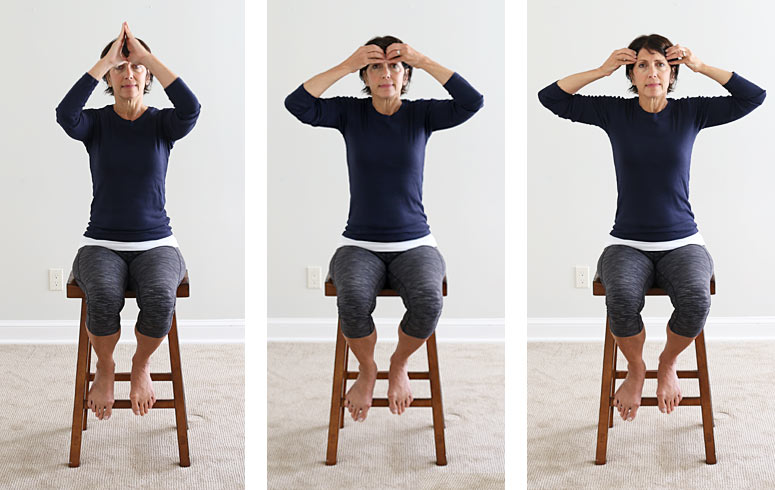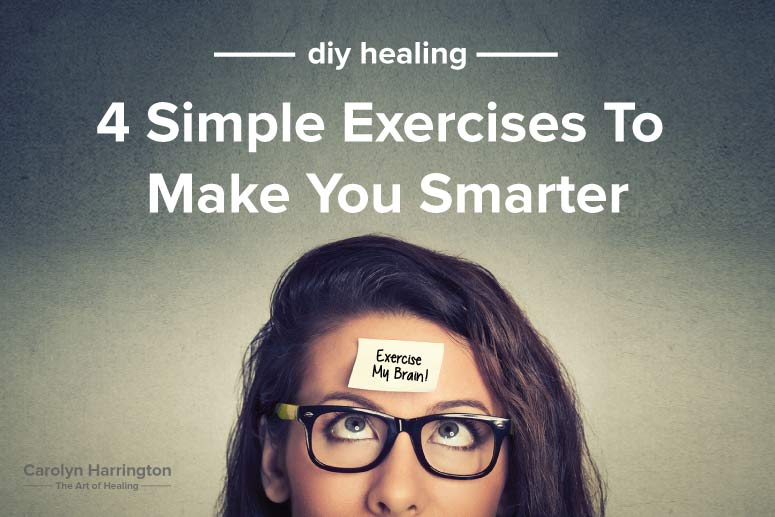To live a vibrant, active, and fulfilling life, a healthy brain is essential. And since losing brain function is common as we age, it’s not only a luxury to keep it healthy; it’s vital. These simple exercises can help boost your brain power.
It was believed that if you lost brain function, you couldn’t get it back. But research has shown that your brain creates new neurons if there is mental activity. Making it a priority to use your brain is crucial to forming new neural pathways.
Did you know exercises can help increase brain capacity, focus, concentration, and mental acuity? Achieve optimal health by boosting your brain power with these four simple exercises.
Exercises To Boost Your Brain Power
Brain Exercise #1
This exercise only takes three minutes to complete. It improves memory, concentration, and focus. It’s even useful for alleviating brain fog or mental instability.
According to Yale neurobiologist Dr. Eugenius Ang, your earlobes have acupuncture points that stimulate neural pathways. By grabbing your earlobes, you stimulate neural pathways which stimulate the brain. An EEG (electroencephalography) has shown that after doing this exercise, your left and right hemispheres of your brain become synchronized.
Originating from a Pranic healing practice, it works with subtle energy permeating your body.

Instructions:
1. Stand with you feet shoulder width apart. Toes should be pointed forward.
2. Starting with your left hand, grab your right earlobe with your LEFT thumb and index finger. Place your thumb in front.
3. Take your right hand and cross over your left arm. Grab your left earlobe with your RIGHT thumb and index finger. Again, your thumb is in front.
4. While holding your earlobes, do a squat. Go as low as you can. Exhale as you squat. Inhale as you stand. Continue to do 15 squats in this position. Do this exercise daily. Build up to three minutes daily.
Brain Exercise #2
I first saw this exercise years ago when I was studying energy healing from Donna Eden. It intrigued me because it helped people with dyslexia and stuttering. It also helps with other psychological problems including confusion, concentration, disorganization, excessive anger and depression. It helps to unscramble the energies moving in a crossover pattern from the two sides of the body.

Instructions:
1. Sit in a chair with your spine straight.
2. Place you left leg over your right knee.
3. Wrap your right hand around the front of your left ankle.
4. Wrap you left hand over the ball of your left foot with your fingers curled around the side of your foot.
5. Breathe in through your nose letting your body lift as you breathe. Pull your leg toward you, creating a stretch. Repeat this slow breathing and stretching four or five times.
6. Switch to the other foot. Place your right foot over your left knee. Wrap your left hand around the front of your right ankle and your right hand over the ball of your right foot. Remember to curl your fingers around the side of your foot. Breathe in through your nose letting your body lift. Pull your leg toward you to stretch.
7. Breathe slowly and deeply, in through the nose and out through your mouth. Do this for about 3 or 4 full breaths.

8. Take both hands and form a steeple. Take your thumbs and place them on the bridge of your nose. Breathe in and out for about 3 or 4 full breaths.
9. On the last exhalation, curl your fingers into the middle of your forehead. Then firmly and slowly smooth your fingers across your forehead to your templates.
10. Finish by slowly bringing your hands down in front of you.
Brain Exercise #3
I found this exercise to be interesting.
Studies show that our heart and mind interact. When your mind and heart are in sync, we can resolve conflicts. Your heart has hormones that affect the brain. Often the conflicts we have are between our subconscious and conscious minds.
In this study, they used an EEG and an EKG to place electrodes on the brain and the heart. While in their normal state, readings from the EEG and EKG were jagged and looked nothing alike. But after completing this exercise, the readings were rounded and synched. They were no longer irregular. They even started tracing each other.
This exercise is useful for gaining clarity on a situation. It helps align your thoughts and enhance your brain function. If something is puzzling you, ask yourself that question while performing the exercise. You may find you get the answer you are seeking.
Another study by a Harvard Researcher showed controlled breathing resulted in increased brain size.
This exercise came from a method developed by Tony Robbins. You can listen to his podcast about performing this technique.

Instructions:
1. Place your hands on your heart. Feel your heartbeat. Breathe in with 3 or 4 deep breaths.
2. While continuing to breathe deeply, think of something you are grateful for. Step into that moment when you felt grateful. Find that magical place when you were amazed and happy.
3. Don’t just think of it. Feel it. Fill up with gratitude.
4. Think of a second moment when you felt gratitude. Step into that moment too. Feel the emotions you felt back during this beautiful moment.
5. Do this one more time with a third grateful moment.
6. After three minutes, you should shift by entering a state of relaxation and peace.
7. Ask yourself questions like, “All I need to focus on is….?” or “All I need to know at this moment is…?” Your heart knows and will answer you. You will experience a shift in the quality of your thoughts and emotions with practice.
Brain Exercise #4
Our brain is an energy-demanding organ. While it makes up only 2 percent of our body’s weight, it demands more than 20 percent of our body’s energy supply.
Studies have shown that when you flood the brain with oxygen, it’s able to do mental tasks at a much higher level.
The same study showed if your mental strain increased so does the demand for oxygen from the brain. (This may be why Exercise #3 helps).
Keep your brain healthy and in optimal working performance. You can do this with aerobics. Interval training is a good choice. By alternating high-intensity exercise with low-intensity recovery periods, your breathing is elevated.
Pick an activity that increases your breathing like jump rope or sprinting. Then switch to wind down exercise like walking. Do the high-intensity exercise for a short interval such as 30 seconds. Then do your recovery one for 1 minute.
Alternate between high-intensity and the recovery periods for at least seven repetitions.
The good thing about interval training workouts is there’s no hard or fast rules about doing it. The time you do each exercise is up to you. Just make sure you alternate. It’s not only good for your fitness, it’s excellent for increasing the oxygen to your brain. This helps boost your brain power.
Summary
We all want to keep our mental faculties in optimal shape. By exercising your brain you can increase your brain power and become smarter. The key is to practice.
FUN FACT:
Your brain is made of up 100 billion nerve cells.
About the same as the number of trees in the Amazon Rainforest.
Peace and be well,

Founder of Maty’s Healthy Products — a line of natural & organic health products made from whole food ingredients
Carolyn Harrington

